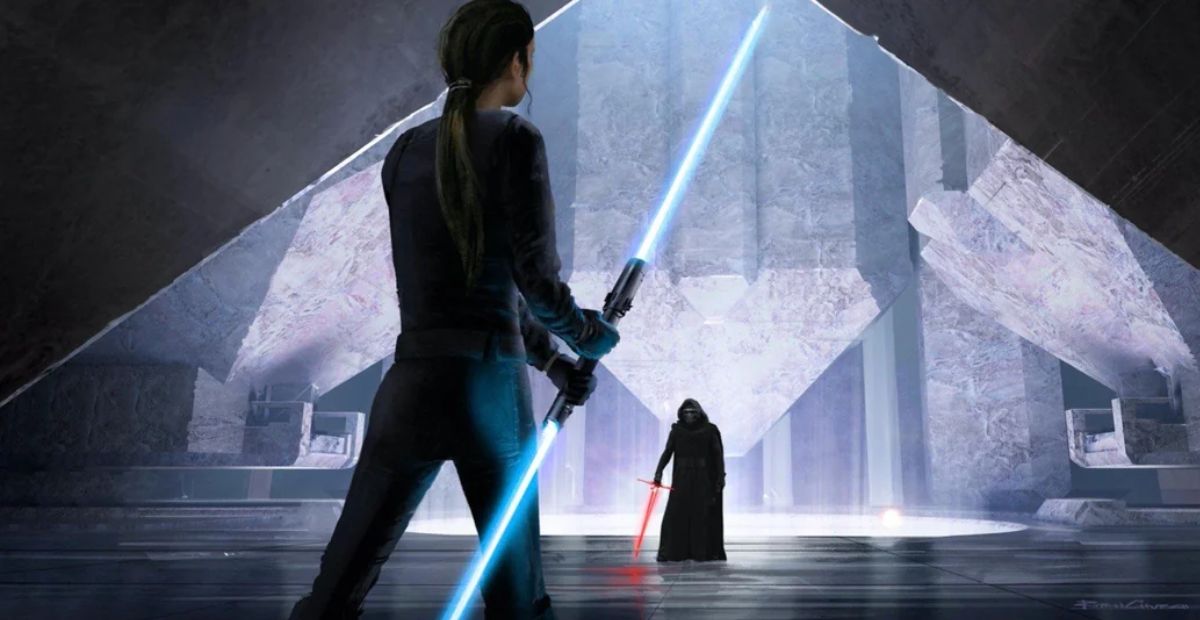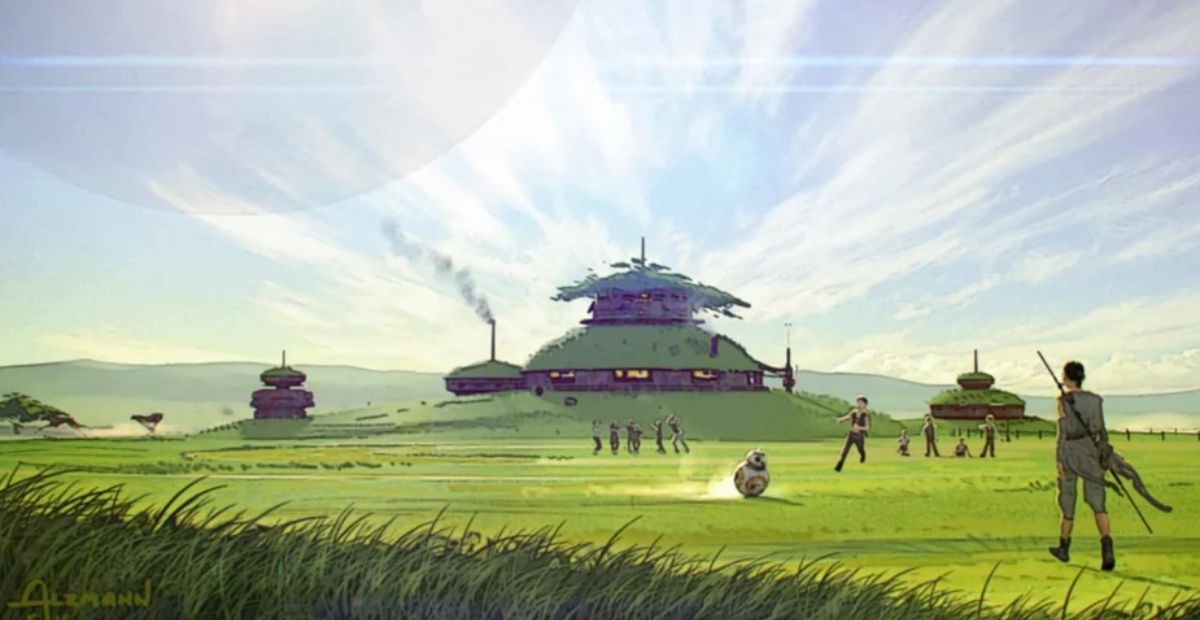Ever wish The Rise of Skywalker had taken a different route?
If you’ve ever heard about Colin Trevorrow’s version of Episode IX, titled Duel of the Fates, you’re not alone in wondering how things might have turned out.
This alternate script had an entirely different approach to ending the Skywalker saga—darker, grittier, and arguably more cohesive with The Force Awakens and The Last Jedi.
Let’s dive into what Duel of the Fates would’ve brought to the table and why so many fans still wish we’d gotten it instead.
A Galaxy Under First Order Control
Right from the start, Duel of the Fates sets a different tone. In this version, the First Order isn’t just looming over the galaxy—it fully controls it.
General Hux, now the Supreme Chancellor, has cut off all communication across planets, isolating the galaxy from itself.
It’s a bleak, oppressive environment where hope feels almost out of reach.
Unlike The Rise of Skywalker, which had the Resistance simply hiding out, Duel of the Fates amps up the stakes with the galaxy actively suffering under First Order rule.
The Resistance, led by General Leia, is still fighting, but resources are scarce.
Our heroes—Rey, Finn, Poe, Rose, and BB-8—start the story by stealing a massive Star Dreadnought from the First Order on the planet Kuat.
This isn’t just a small act of rebellion; it’s a high-stakes mission.
Kylo Ren’s Descent and Sith Training
Now, here’s where Duel of the Fates really departs from The Rise of Skywalker.
Instead of making Kylo Ren a puppet to Palpatine, this version has him seeking out ancient Sith knowledge on his own terms.
We see Kylo exploring Darth Vader’s castle on Mustafar, where he discovers a Sith holocron that leads him to Tor Valum, a 7,000-year-old alien and former master of Darth Plagueis.
Kylo’s arc is all about fully embracing the dark side, driven by his thirst for power, rather than wavering between light and dark.
As part of his dark training with Tor Valum, Kylo encounters a phantom of Darth Vader. This moment mirrors Jedi training, but with a sinister twist—it’s darker, more haunting, and rooted in the pull of the dark side.
During this intense experience, Kylo masters the ability to absorb life energy, a deadly skill he later uses to kill his own Sith master, Tor Valum.

Rey’s Path as a Self-Made Jedi
One of the most polarizing aspects of The Rise of Skywalker was the revelation that Rey was a Palpatine.
Duel of the Fates takes a different approach, sticking with the idea that Rey’s power and strength come from herself, not from a bloodline.
Rey remains “no one,” a true embodiment of the idea that greatness can come from anywhere.
In Duel of the Fates, Rey wields a double-bladed lightsaber, paying homage to her past as a scavenger who learned to fight with a staff.
There’s even a moment where Rey faces the temptation of the dark side and uses Force lightning in self-defense, which unsettles her.
This element gives her character real depth, as she struggles with the darker aspects of her power and what they mean for her path as a Jedi.
Rey’s mission to find the ancient Jedi Temple on Coruscant in order to restore galactic communications is also a unique twist, combining her role as a warrior with that of a seeker of knowledge.
Finn, Rose, and a True Revolution
If you felt Finn and Rose were sidelined in The Rise of Skywalker, you’re not alone. Duel of the Fates would’ve given these characters a meaningful arc, especially Finn.
He leads a rebellion on Coruscant, inspiring other stormtroopers to defect and fight against the First Order.
Imagine Finn, a former stormtrooper, rallying others like him to resist—finally giving him the heroic, impactful arc he deserves.
Meanwhile, Rose plays a critical role in the mission to Coruscant, using her technical skills to help activate a device that could broadcast Leia’s message of hope across the galaxy.
Together, Finn, Rose, R2-D2, and C-3PO ignite a revolution among Coruscant’s citizens, droids, and defected stormtroopers, giving the finale a gritty, boots-on-the-ground feeling that echoes Rogue One.
It’s a true people’s uprising against tyranny, something that feels raw and powerful.
A Final Duel on Mortis: Rey and Kylo’s Last Stand

While The Rise of Skywalker concludes with a more conventional battle against the Sith fleet, Duel of the Fates offers a deeply personal showdown between Rey and Kylo Ren on the planet Mortis.
Rey has a vision of herself facing Kylo there, which drives her to confront him alone.
In their final duel, Kylo blinds Rey, almost killing her.
But with the guidance of Luke Skywalker’s Force spirit, Rey gathers her strength and ultimately overpowers Kylo by embracing both light and dark within herself.
Kylo, realizing he cannot win, tries to drain Rey’s life force to survive.
In a twist, Leia reaches out to him through the Force, and Kylo, moved by his mother’s love, sacrifices his own life energy to save Rey.
In his last moments, he reveals Rey’s true birth name—Rey Solana—and dies, completing his journey not with redemption, but with a sense of closure.
It’s a bittersweet end for Kylo, one that doesn’t erase his crimes but acknowledges the complexity of his character.
A New Jedi Order: Rey’s Mission to Teach Balance in the Force

Duel of the Fates closes on a note of hope and unity. Finn, Poe, Rose, and Chewbacca are honored with medals at the Resistance base, echoing the celebration from A New Hope.
Finn and Rose even settle on Modesta to help raise Force-sensitive children, hinting at a new beginning for the Jedi Order.
Rey arrives at their homestead, vowing to teach these children about the balance of light and dark—a philosophy that embraces both sides of the Force, breaking away from the rigid teachings of the past.
This ending feels like a natural evolution for the Star Wars saga.
Instead of just ending the fight, it suggests a future that builds on the lessons learned from both the Jedi and Sith, creating a new kind of balance in the galaxy.
The Star Wars Finale We’ll Never See
Ultimately, Duel of the Fates remains a “what if” scenario, a vision of how the sequel trilogy could have ended.
For fans who wanted a more cohesive, daring conclusion to the Skywalker saga, this alternate script represents a missed opportunity.
It’s a darker, bolder story that doesn’t rely on nostalgia as much as it does on character growth and thematic closure.

